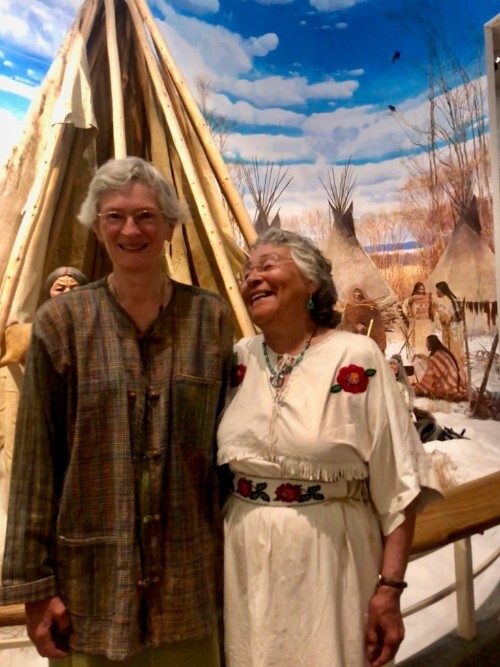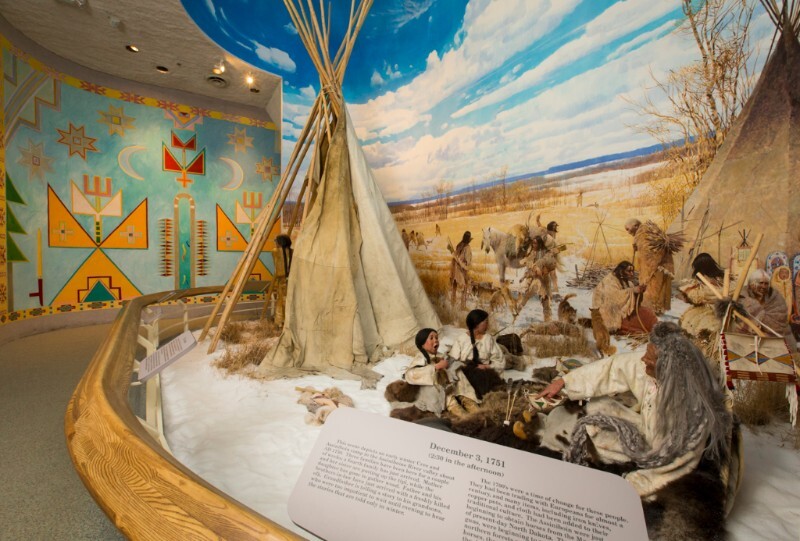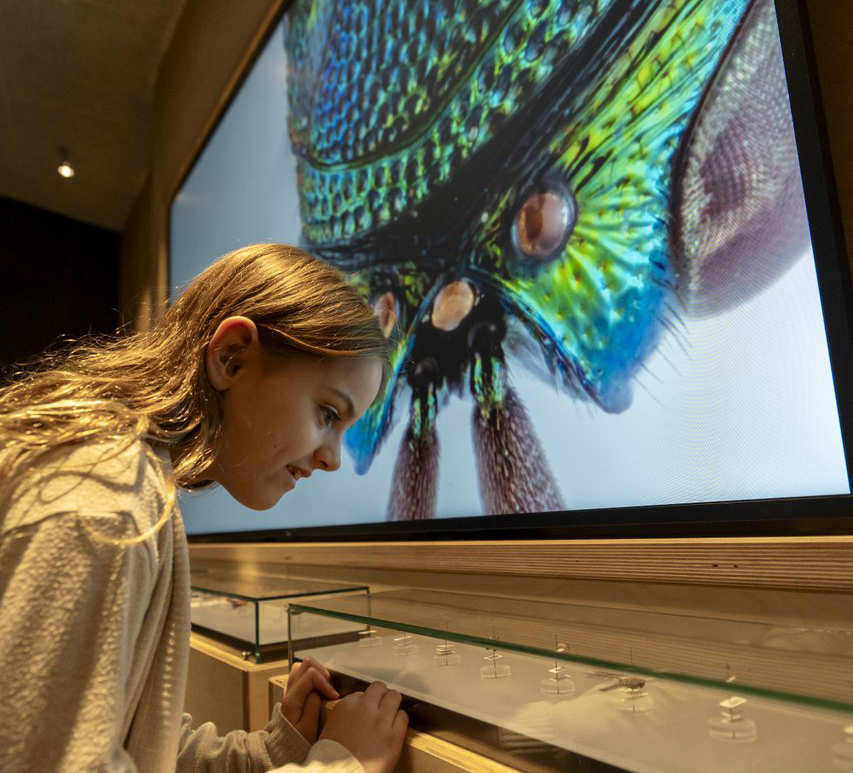Throughout June we celebrated National Indigenous History Month. With events centred around weekly themes including Film Week, Treaties Week, and Tools and Technology Week, they led up to the month’s major event, the celebration of the 25th anniversary of the Royal Saskatchewan Museum’s First Nation’s Gallery – a groundbreaking achievement at the time. An estimated 3 million visitors have gone through the gallery since it opened – that's 3 million students, teachers, residents, newcomers and tourists from across Canada and abroad.
Leading up to its opening in 1993, the First Nations Gallery was developed through partnership and collaboration with Indigenous people across the province and former RSM Curator of Aboriginal Studies Dr. Margaret Hanna. She was a guest speaker at the celebrations on June 26, and below are her reflections on the momentous achievements that she shared that day.

Margaret Hanna (left) with Miriam Thomas (right) standing in front of the buffalo hide tipi Miriam handmade for the First Nations Gallery.
--- --- --- --- --- --- ---
Elders, guests, ladies and gentlemen, thank you for coming today to be part of this celebration.
Twenty-five years ago, just before the gallery opened, a reporter asked me, "Is the First Nations Gallery a success?" I don't remember what I answered. I do remember thinking – later – that it wasn't up to me to decide; the people who visited the gallery would decide whether or not it was a success.
When we started thinking about building this gallery 32 years ago, working with Indigenous people was unheard of. A couple of colleagues asked me, "Why are you bothering to work with Indians? Aren't you the expert?"
I replied "Well, in a couple of things, maybe."
By the time the gallery opened, attitudes had changed. Now, museum staff were asking me, "We are thinking of doing such-and-such. What Elders should we talk with?"
At the beginning of the planning process, we sat down with a council of Elders from across the province to discuss what we could and could not, should and should not do. At one point, someone in the audience stood up and berated the Elders, accused them of selling out. When she finally sat down, there was a long and awkward silence. Finally, Bill Standingready of White Bear spoke up.
"Yes," he said, "yes, a lot of bad things have happened. But," he said, "this is an opportunity to educate our young people who live in the city. It's an opportunity to educate white people about our history."
In that statement, Mr. Standingready laid out two very important goals of what eventually became the First Nations Gallery.
It was a long and difficult process. We had to overcome decades of mistrust and suspicion. We met with elders and traditional artists in their homes, we attended ceremonies and pow wows, we listened and listened and listened. Fortunately, there were those, like Mr. Standingready, who were prepared to take a chance on us, and who were willing to advise and guide us.
Scores of people – Elders, painters, traditional artists, sculptors, designers, tradespeople, film-makers, model-makers, indigenous and nonindigenous alike – worked on this gallery. We are indebted to them all for their hard work and their commitment to the project. I would like to acknowledge three people in particular for their contribution.
First is Gerry Conaty. Unfortunately, he is no longer with us, he passed away a few years ago. He was curator of the gallery in the beginning, and as we discussed ideas, he said, "We have to talk with Elders. We have to involve First Nations." Gerry was the one who set us on the path we took. If not for him, who knows what would be in the space that is now the First Nations Gallery.
Second is Larry Asapace. Larry was our liaison, our guide, our go-to person for everything. What Elders do we need to consult? Larry will know. Do we need a ceremony for this stage? Ask Larry. I lost track of the number of times I drove across the province with Larry for a cup of coffee and a chat with an Elder. On the way, he regaled me with stories of his family, his reserve, and his people. Sometimes those stories had a purpose - to instruct me or remind me of what I should be doing - and sometimes they were just to entertain. All the time, he strove to keep us on the right path. Thanks, Larry, wherever you are out there in the wide world.
The third is Les Goforth. Les, too, is no longer with us; he passed away far too young. Les stormed into Gerry's office one day, early on in the project, and recounted in no uncertain terms how museums had been complicit with churches and police in robbing Indigenous people of their culture and of their sacred items, and asked, what were we going to do that was different? Gerry's response was to give Les a challenge. "We want a bison hide tipi for the gallery. Can you find someone to make it? We'll give you a contract to co-ordinate the project." It was the first of only two times that I ever saw Les speechless. Those of you who remember Les will know how rare an event that was.
In the end, Les became one of our greatest supporters. He found traditional artists who created so many of the objects you see in the gallery, including Miriam Thomas and her sister Mary Lee who made the tipi. He brought friends and relatives in to see the gallery in process. He talked about it wherever he went. He even wrote an article that was published in Muse, the journal of the Canadian Museums Association.
And here we are, 25 years later, celebrating not just the gallery but more importantly the project that built bridges, that took one small step toward healing the rift between Indigenous and non-indigenous people. It was a small act of reconciliation, long before that word became commonplace.
So, is the First Nations Gallery a success? Once again, I leave it to you to decide what the answer is.
Thank you again for coming. Enjoy the rest of the celebration.


